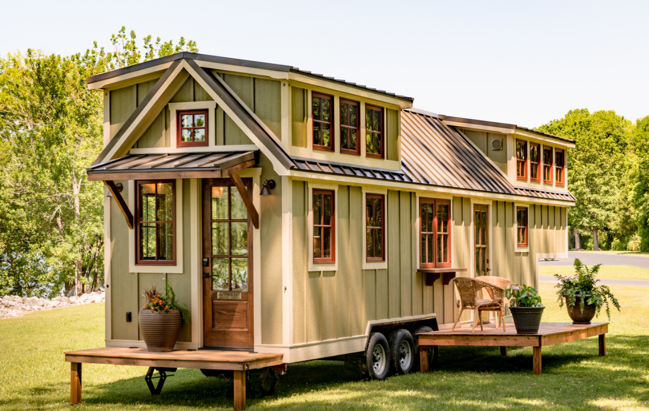A Global Dilemma: Is It A Building Or Is It A Vehicle?
Tiny Houses On Wheels-How many municipalities across the globe are asking the question ”Is A Tiny House On Wheels A Building Or A Vehicle?
There are numerous associations that have formed across the globe representing the stakeholders to implement change in legislation and zoning to legalize tiny houses to become a viable solution to housing. There are think tanks, affordable housing summits, festivals and meeting after meeting occurring, all with the goal to create more legal places to live.
At this time, there is not one unified industry standard that is recognized for tiny houses on wheels and each jurisdiction, bank, insurance agency, etc… could have a different definition and criteria to deny or allow them.
Tiny houses on wheels are most commonly built with RV and Park Model standards.
How Is A Travel Trailer Or Park Model A Tiny House?
At this time, there is not one unified industry standard that is recognized for tiny homes on wheels and each jurisdiction, bank, insurance agency, etc… could have a different definition and requirements, including size and if they are allowed as a dwelling.
Most tiny home builders are building RVs built to the NFPA 1192 Standard or the Park Model Standard, ANSI 119.5 for the ability to have them certified and registered, to get a Vin number and title.
These standards address all safe health, life, and fire precautions.
The builders most always exceed the minimum requirements of these standards and build to 2 X 4 and 2 X 6 construction, increase insulation values, have 25-year roof warranties, increase truss loads when applicable, and use superior quality materials.
The beauty of tiny homes is they are custom built to order and can be built for all seasons with a focus on durability and longevity. They can also be built to any added requirements of the jurisdiction.
Example: Los Angeles

Los Angeles ADUs And Movable Tiny Homes
The City’s Accessory Dwelling Unit Ordinance (Ord. 186,481) was adopted on December 11, 2019 and became effective on December 19, 2019. Among additional matters, it added Los Angeles Municipal Code (LAMC) Section 12.22A.33. This new section of the LAMC includes local development standards and requirements for ADUs, Junior Accessory Dwelling Units (JADUs), and Movable Tiny Houses (MTHs) in Government Code (GC) Sections 65852.2 and 65852.22.
Accessorary Dwelling Unit ( ADU )
An ADU is an attached or detached residential dwelling unit that provides complete independent living facilities for one or more persons and is located on a lot with a proposed or existing primary residence. It shall include permanent provisions for living, sleeping, eating, cooking and sanitation on the same lot as the single family or multifamily dwelling is or will be situated.
Junior Accessory Dwelling Unit ( JADU)
A Junior Accessory Dwelling Unit is a unit that is no more than 500 square feet in size and contained entirely within a single-family residence. A JADU may include separate sanitation facilities, or may share sanitation facilities with the existing structure. The JADU or single-family residence shall be owner occupied.
Movable Tiny House ( MTH )
A Moveable Tiny House is an enclosed space intended for separate, independent living quarters of one family and meets all of the following:
- Is licensed and registered with the California Department of Motor Vehicles;
- Meets the American National Standards Institute (ANSI) 119.5 requirements or the National Fire Protection Association (NFPA) 1192 standards, and is certified for ANSI or NFPA compliance. A 3rd party inspection agency (Design Approval Agency/Quality Assurance Agency) shall certify the MTH meets this requirement (List of approved 3rd party Design Approval Agencies (DAA) and Quality Assurance Agencies (QAA));
- Cannot move under its own power;
- Is no larger than allowed by California State Law for movement on public highways; and
- Is no smaller than 150 and larger than 430 square feet as measured within the exterior faces of the exterior walls.
Development Standards and Requirements
ADUs, JADUs, and MTHs are allowed in any zone that allows for residential use by right. Parking for a newly constructed ADU is not required when it is located within one-half mile walking distance of a public transit. Replacement parking is not required when covered parking is removed in conjunction with the construction of the ADU.
ADUs are required to comply with all applicable Zoning, Building, and Residential Codes. Fire sprinklers are not required if they are not required for the primary residence. Solar panels will be required for newly constructed, detached ADUs.
Example: Tiny Homes In San Luis Opispo

The Community Development Department recently updated its Zoning Regulations which included provisions for Tiny Homes on Wheels in the backyard of on a site with an owner-occupied single-family residence. A single-family residence (Single-Unit Dwelling) is defined as a dwelling unit designed for occupancy by one household which is not attached to or located on a lot with commercial uses or other dwelling units.
Tiny Homes on Wheels are also referred to as Recreational Vehicles (RV) according to the California Department of Housing and Community Development (HCD), and is required to receive certification from the American National Standards Institute (ANSI) and registration by the Department of Motor Vehicles (DMV).
Examples Of The Global Dilemma
New Zealand
Canada
Fair Go’s Gill Higgins looks into the complex issue of building a tiny house in New Zealand.
Caroline Smith is worried about being forced off her own land.
She sits on the top step of the colorful tiny house she owns and says she gets anxious thinking about what might happen to her ponies, goats, ducks, and dogs if she has to leave.
This was supposed to be her forever home, nestled among the rolling hills of the Manawatu.
It was affordable, simple living. Until now.
Tiny homes an ‘obvious’ answer to our housing crisis Dec. 12th, 2020
Nelson woman Eva Pomeroy was sick of being nitpicked at three-monthly flat inspections, so she decided to build her own house.
“I was also sick of asking for permission to do anything in a house,” Pomeroy says. “I wanted my own place where I could make it my own.”
A friend studying design at Nelson Marlborough Institute of Technology drew up plans for a tiny house on wheels.
And in what initially felt like a stroke of luck, the polytech’s building department also took on the project for its carpentry students.
Trying to build legally leaves tiny home couple ‘worse off’ March 23rd, 2020
Tiny-home owners and councils are calling for simplified resource consent rules as owners trying to do the right thing get caught up in red tape.
Tasman-based couple Mohammad and Leela Aboubakr found themselves in trouble, despite consulting their district council, when they built what they believed to be a vehicle not subject to the Building Act, not requiring resource consent.
Mohammad Aboubakr now says they are being punished for trying to do the right thing, as conflicting advice from the council and confusion over what rules should apply have left them with potentially thousands of dollars of unplanned expenses.
“Going to the council has put us worse off than if we had just gone and built this up in the bush somewhere, illegally.”
Tiny house or mobile home? Owner takes march for justice to Parliament March 7th, 2020
A woman embroiled in a legal battle with a council argues her tiny house should not require a building permit because it is a vehicle.
Caroline Smith is taking her fight to Parliament after receiving a notice in the mail from Manawatū District Council officials who say her tiny home violates building laws and requires consent.
Smith, who lives in Halcombe, says tiny houses are an obvious part of the solution to New Zealand’s housing crisis.
However, their viability may be threatened by uncertainty and confusion over the regulations governing them, specifically, whether a structure on wheels, which can be moved, should be defined as a building and subject to the provisions of the Building Act.
Pandemic spurs tiny house interest, while builders say regulatory hurdles remain Dec. 25th, 2020
The COVID-19 pandemic has prompted many Canadians to re-evaluate their housing and work arrangements, spurring some to think not big, but tiny.
Pamela Robertson builds tiny homes in Gibsons on B.C.’s Sunshine Coast and said she couldn’t keep up with requests for quotes after the pandemic hit.
“Everybody wanted a tiny home that was built in stock and I build to order,” said Robertson, whose tiny homes on wheels are inspected to meet the Canadian Standards Association specifications for recreational vehicles.
Why tiny backyard homes might be the next big thing in Toronto Dec. 8th, 2020
City set to pave way for granny flats, coach houses as legal dwellings.
City councilors are set to take the next step towards legalizing a new kind of housing: garden suites.
Sometimes known as granny flats or coach houses, they’re structures — either existing or purpose-built — at the rear of some backyards in which people can legally live.
Impatient with Red Tape, Vancouver Builder Makes a Tiny Home Prototype Dec. 4th, 2020
A Vancouver home builder isn’t waiting for government regulations to change to demonstrate his idea for quickly offering emergency housing to homeless people.
Bryn Davidson is putting the finishing touches on a prototype of what he calls a “tiny townhome,” a basic shed-like structure that Davidson has suggested could be an alternative for people who are homeless and live in a tent or without any shelter at all.
Confusion, Backlash Surround Hazelton Area Zoning Amendments
A proposed Regional District of Kitimat-Stikine zoning amendment bylaw regarding mobile dwellings has been met with backlash by residents of the Hazelton area.
Officially titled “Two-Mile Zoning Amendment Bylaw No, 743, 2020,” the amendment was given first and second reading by the regional district board on Sept. 25, 2020, and was the subject of a public hearing held on Oct. 20 at the Erwin Stege Community Centre in New Hazelton.
The change to the original 1992 bylaw would clarify language, explicitly stating that campers, recreational vehicles, and park model trailers are not “dwellings.” It also changes the definition of “mobile home” to add more detail. The same changes are proposed for the South Hazelton Zoning Bylaw No. 326, 1992. Dwellings need to adhere to the provincial building code.
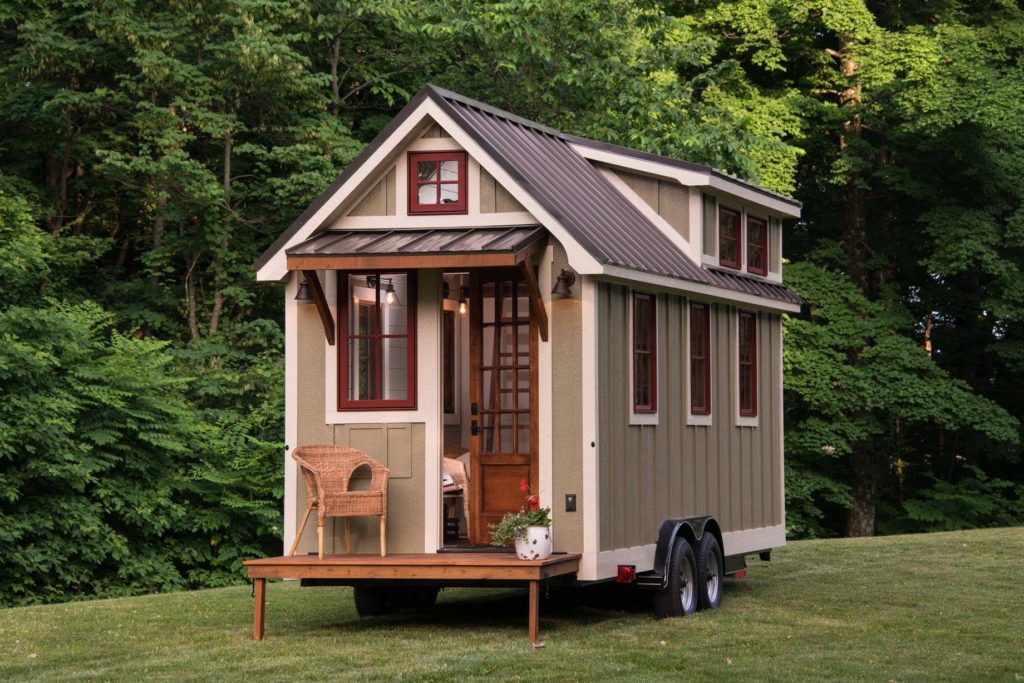
The Tiny House Industry Is Experiencing Tremendous Growth
Through Legislation, Zoning Changes And Demand
The Tiny House Industry is a thriving industry that is not a passing fad or trend. We are here to stay. The demand has exploded during the pandemic because it the perfect small home for isolation. In fact, if you talk to many builders, they could not even meet the request of some clients who needed the homes immediately, some asking for 100 at a time.
Imagine What Our Industry Would Be With The Barriers Removed
Tiny House Advocacy News
What Is Happening Across The Country?
I have been documenting all the groundbreaking changes through legislation and zoning and building codes. Appendix Q Tiny Houses has been welcomed and adopted by more than half the country which pertains to tiny houses on a foundation, 400 square feet or less.
Appendix Q Tiny Houses was approved for inclusion to the 2018 International Residential Code ( IRC ).
The consumer, the builder, and the jurisdiction are all on the same page, removing all grey areas.
Tiny Houses On Wheels is in need of a clear path for legal living.
Affordable Housing Can't Wait
This Is Allowed
This Is NOT Allowed
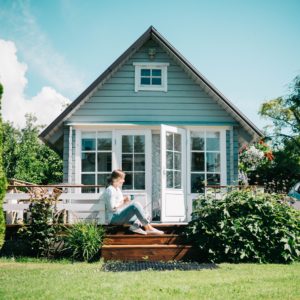
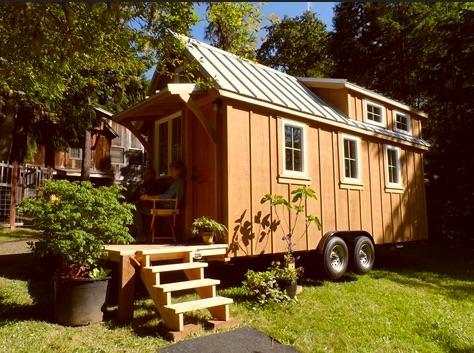
Photo Courtesy: Birgit Unsplash
Photo Courtesy:Oregon Cottage Company
What Are We Missing?
Tiny Houses On Wheels Need To Have Their Own Standard
Tiny Houses On Wheels Do Not Have Their Own Standard And Are Not Clearly Defined In A Uniform Manner That Is Widely Excepted And Is Left To Interpretation -Leaving Our Industry With A Myriad Of Solutions That Fall Short Of Our Goals-To Answer The Call For The Housing Shortage And To Broaden Homeownership.
What Is The Lack Of A Standard Contributing To?
- Creates Confusion-Adds Mountains Of Red Tape
- Affordable Housing Solutions Are Delayed
- Adds Extra Costs
- Lack Of Financing
- We Are Lobbied Against
- Homeowners Are Being Evicted
- Misinformation Flourishes
- Lack Of Legal Places To Live
- People Live Under The Radar
- Not A Clear Path How They Should Be Built
Tiny Houses on wheels are all built to different standards so jurisdictions often spend years trying to figure out what to do with them. Tiny Houses On Wheels Are Built To The Following Codes And Standards:
NFPA 1192
ANSI 119.5
Modular
HUD
Travel Trailer
Park Model
Off-Site Construction
Manufactured Home
Most Often Tiny Houses On Wheels Are Built To RV And Park Model Standards
However- There Are Jurisdictions That Allow Them To Be Built To The HUD Standard
Tiny Houses Built To The HUD Standard
Minnesota
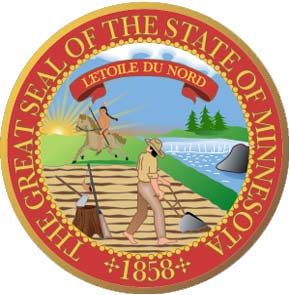
The Minnesota Residential Code includes Appendix Q Tiny House. The ”code” for the purpose of constructing houses, means the 2020 Minnesota Residential Code, is a standard that applies statewide.
The Tiny Home Sheet describes how tiny houses are regulated by building codes, zoning codes, and HUD. Tiny homes can be built as prefab homes, Modular buildings, manufactured homes, and site built.
Washington State
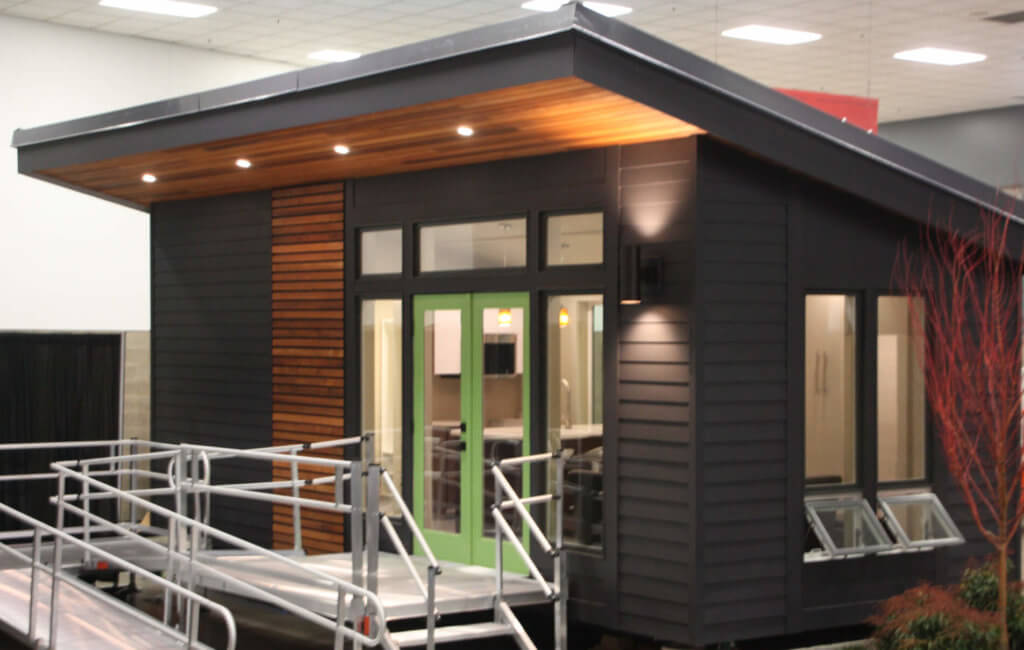
Washington State Allows Tiny Houses On Wheels For Long Term Living Built To Local Modular Codes.
Washington state does not use 3rd party inspection agencies to inspect and certify.
Please refer to the Washington State Department Of Labor Of Industries ( L& I ) for the inspection and the approval process.
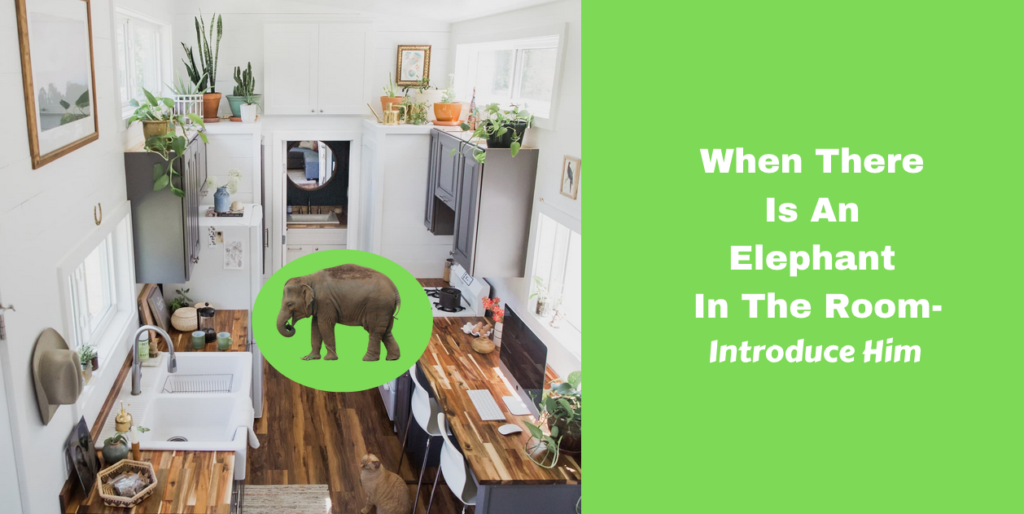
The Elephant In The Tiny House
Tiny Houses On Wheels Are Using Standards From Another Industry That States We Are Co-opting Their Definitions And Standards.
In Their Own Words:
Affordable Housing Efforts Threaten RV Industry
By: RV Industry Association Staff May 23rd, 2020
In an effort to increase affordable housing, some policymakers across the country have begun to look to tiny homes as a solution. Unfortunately, these efforts have led some legislators, officials and other interest groups to attempt to co-opt RV and PMRV standards and definitions to use them for permanent-use tiny home standards. Washington state was the most active in this effort this year.
Although both NFPA 1192 and ANSI A119.5 specifically state that these standards are for temporary-use vehicles, bills in Washington would have incorrectly defined all types of RVs and used the RV and PMRV standards to define permanent structures.
This push to co-opt RV standards and definitions and apply them to permanent use tiny homes will likely continue to grow in the future. Washington was the most active in this issue area during the 2019 legislative session, but it was not the only state with this type of legislation. It is expected that this push by affordable housing advocates to find some type of permanent use tiny home definition will continue. The state team will continue to defend against these kinds of bills to ensure RVs are not confused with any type of permanent housing.
For questions on this issue, contact Nick Rudowich at nrudowich@rvia.org.

Things That Make You Go Hmm...........
A Primary Goal Of All Our Organizing As An Industry Is To Create Long Term Permanent Legal Places To Live For Tiny Houses To Gather In Communities And On Land Of Our Own
-Yet As Stated Above
”The state team will continue to defend against these kinds of bills to ensure RVs are not confused with any type of permanent housing.”
In conclusion, one of our primary goals is in conflict with the goals of one of the same organizations that actually certifies tiny houses on wheels.
3rd Party Inspection,Testing And Certification Agencies
List of 3rd party agencies that inspect and certify tiny houses on wheels that support the growth of the tiny house industry.
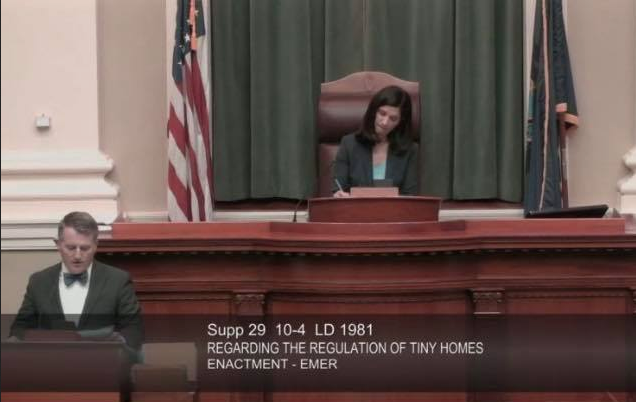
Regarding Maine Tiny House Bill LD 1981
RE: Concerns With LD 1981; An Act Regarding The Regulation of Tiny Houses
RV Industry Association
January 29, 2020
Transportation Committee
RE: Concerns with LD 1981; An Act Regarding the Regulation of Tiny Houses
Chair Diamond, Chair McLean,and members of the Committee on Transportation,I appreciate this opportunity to write you today on behalf of the RV Industry Association to share our concerns for you to consider in the language ofLD 1981.
The RV Industry Association is the national trade association representing the diverse manufacturing businesses that manufacture more than 98 percent of all recreational vehicles(RV)produced in the United States —including motorhomes, travel trailers, fifth-wheel travel trailers, folding camping trailers, truck campers, and park model RVs.
We are the unifying force for safety and professionalism within the RV industry and work with federal and state policymakers to promote and protect the RV industry and its members. Unfortunately, the RV industry has become inadvertently captured in many of the issues that surround tiny homes.
Tiny homes are small dwellings designed for permanent year-round use, while RVs are vehicles designed for temporary, camping and travel use. The questions which encompass tiny homes, and their encroachment on RVs,are increasing as we have seen legislation introduced in several other states.
LD 1981 Was Signed Into Law On March 18th, 2020
An Act Regarding The Regulation Of Tiny Houses LD 1981 Signed By Governor Janet T. Mills Brown: March18th, 2020 Maine- An Act Regarding The Regulation Of Tiny Houses ”LD 1981, sponsored by Senator Michael Carpenter was signed by Governor Janet T. Mills Brown on March 18th, 2020. This bill proposes to define what a tiny house is and to allow for the titling of a tiny house as a camp trailer or a trailer. An Act Regarding the Regulation of Tiny Homes Emergency preamble.
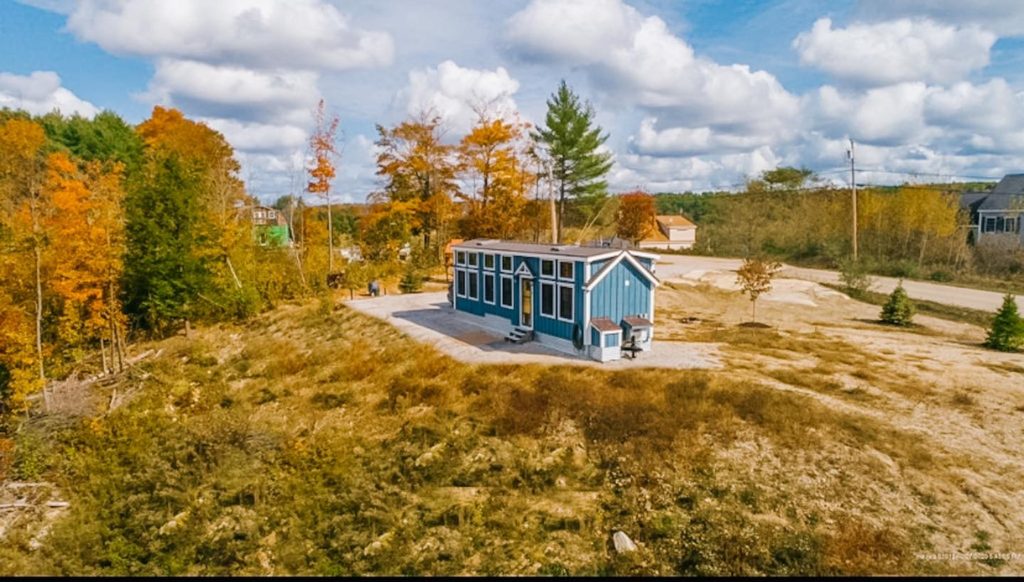
Photo Courtesy:
Tiny Homes Of Maine
Mobile Tiny Houses In Maine Hit A Major Roadblock
The passing of LD 1981 was a great success for the tiny house industry but before that there was chaos in Maine, in the summer of 2019 when municipalities were notified by the Maine Secretary of State that the Bureau of Motor Vehicles would no longer register, assign vehicle identification numbers to or title tiny homes on wheels.
Read The Backstory: Mobile Tiny Houses In Main Hit A Major Roadblock
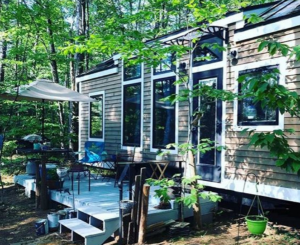
Photo Courtesy:
Tiny Homes Of Maine
Source Tiny Homes Of Maine
LD 1981 Passed Now What?
Background:
The passage of LD 1981 ‘An Act Regarding the Regulation of Tiny Homes’ came about because the Secretary of State’s Office thought the current statute should be updated to include the regulation of Tiny Homes (this page is referring to tiny homes on wheels only).
There was a lot of effort put forth between the Tiny Home industry and the Secretary of State’s Office to come to an agreement on the following language for LD 1981.
Sec. 1. 29-A MRSA §101, sub-§80-C is enacted to read:
80-C. Tiny home. “Tiny home” means a living space permanently constructed on a frame or chassis and designed for use as permanent living quarters that:
A. Complies with American National Standards Institute (ANSI) standard A119.5 on plumbing, propane, fire and life safety and construction or National Fire Protection Association (NFPA) standard 1192 on plumbing, propane and fire and life safety for recreational vehicles;
B. Does not exceed 400 square feet in size;
C. Does not exceed any dimension allowed for operation on a public way under this Title; and
D. Is a vehicle without motive power.
You can view the full detail of LD 1981 here and and read the testimonies given during the public hearing here.
Moving forward:
Any Maine town can opt to allow placement of a Tiny Home on a piece of property as a primary residence or accessory dwelling by citing the definition of ‘Tiny Home’ in title 29-A. Maine, being a home rule state, gives towns the authority to allow Tiny Homes. If the town’s interpretation of the use of a Tiny Home conflicts with the current zoning rules or land use regulations, then the rules can be updated to include Tiny Homes and their permitted uses.
The following guidance comes from the Office of the State Fire Marshal and the Office of the Attorney General as of Friday April 10, 2020.
The regulation of “tiny homes,” as defined in 29-A, is to be the exclusive purview of the Secretary of State through the statutes of Title 29-A. As such, municipal code enforcement officers do not play a role in inspecting “tiny homes.” It is safe to assume that any living space that is issued a tiny home title has been determined by the Secretary of State to meet the statutory definition of a tiny home and is the exclusive jurisdiction of the Secretary of State, not subject to inspection by municipal code enforcement officers.
To simplify, if a tiny home has a title from the Secretary of States Office it is not under the jurisdiction of a local code official except for zoning. The title is going to read tiny home and it would have to meet NFPA 1192 or ANSI A119.5 (recreational vehicle standards). This will be determined by the Secretary of State and will not require an inspection by a local building official. If the tiny home is built on site or does not have a title issued by the Secretary of State it would fall under typical building code jurisdiction.
Approaching your town:
In the past, municipalities struggled with fitting Tiny Homes into the existing building code inspection and compliance process. Now they don’t have to (per the guidance above). Even though we do build our units to both RV standards and IRC Appendix Q building codes there isn’t a process that exists to certify Tiny Homes for both.
The town of Chelsea, Maine made the following simple zoning update to allow Tiny Homes:
Tiny homes on wheels shall be classified as a recreational vehicle and shall meet all standards applicable to recreational vehicles. If the tiny home is occupied for more than 6 months, it shall be classified as a permanent dwelling and shall comply with the lot and frontage requirements applicable to a residential dwelling unit.
Your town can choose how they want to include Tiny Homes in their zoning rules, but you should not have to worry about building code enforcement for “state certified” Tiny Homes.
Financing Tiny Homes:
The State of Maine will issue a title for Tiny Homes that meet the definition in Title 29-A. Typically a title is a requirement from your bank to qualify for financing. You can ask for an RV loan for Tiny Homes.
Some banks and credit unions may be open to other types of financing. Here is a Tiny Home Title Sample.
We hope you found this information useful and we will continue to try to remove the barriers to make tiny living easier for you:)
Oregon Lost $8 Million Dollars In Estimated Revenue
Oregon builders faced a similar problem as Maine that dragged on for years that cost Oregon an estimated revenue of
$8 million dollars and manufacturers that left the state.
Video: HB2737 Oregon House Debate On Tiny Houses
In 2017, The Oregon Building Codes Division Changed The Definition Of Park Models
In 2017, Oregon decided not to allow park models to be titled at the DMV, after the Oregon Building Codes Division changed the definition of park models. I am simplifying the story, but it actually turned out to be a mistake. See articles at the end of the blog post for the backstory.
This decision caused an avalanche of problems for consumers, builders, lenders, zoning and over all anyone involved in this industry in the state, or manufacturers from other states that sold to parties in Oregon.
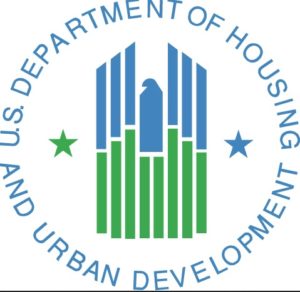
Manufactured Home Procedural and Enforcement Regulations; Clarifying the Exemption for Manufacture of Recreational Vehicles
A Rule by the Housing and Urban Development Department on 11/16/2018
Effective Date: January 15, 2019.
This rulemaking revises the exemption for the manufacture of recreational vehicles to clarify which recreational vehicles qualify for an exemption from HUD’s Manufactured Home Construction and Safety Standards and Manufactured Home Procedural and Enforcement regulations. HUD is adopting a recommendation of the Manufactured Housing Consensus Committee (MHCC) but expanding the definition of recreational vehicle and modifying it to require certification with the updated ANSI standard, A119.5-15.
Highlights
Discussion of Public Comments Submitted on the Proposed Rule and HUD's Responses
The public comment period for the February 9, 2016, proposed rule closed on April 11, 2016. HUD received approximately 5,300 public comments in response to the proposed rule. A wide variety of interested entities submitted comments, including individuals, homeowners’ associations, industry groups, state and local governments, and trade associations. At the outset, HUD notes that an overwhelming majority of these public comments were based on a misunderstanding of the proposed rule’s intent and legal effect.
This misunderstanding was propagated by social media, which opined that the rule was intended to increase regulation and restrict or prohibit consumer use of RVs and other types of housing, such as tiny homes. HUD emphasizes that this rule does not affect the use of RVs by consumers. Rather, this final rule clarifies the exemption for RVs from HUD manufactured housing regulation.
Public Comments
Some commenters stated that because the rule would make it more difficult for full-time RV users to maintain their lifestyle, a host of detrimental secondary effects would result. For example, commenters stated that the rule would worsen homelessness and undermine HUD’s mission by limiting the supply of affordable housing in the United States. Commenters stated that this would disproportionately affect, and effectively discriminate against, people who lack financial resources or face economic hardship; e.g., people adapting to worsening economic conditions, people with disabilities, students with significant debt, veterans, senior citizens, and people who must travel for their work (and their employers, including national parks).
Commenters stated that this would also disproportionately affect people who live alone and people who want to live frugally or practice environmentally responsible living. Commenters stated that the rule would inhibit people from retiring, reduce people’s financial independence, force them into assisted living facilities, and force them to choose between housing and other basic necessities, like food, medicine, and utilities. Commenters stated that the rule would increase burdens already faced by RV residents, including local restrictions on parking, minimum size requirements, and zoning laws. Commenters stated that in response to the rule, manufacturers will merely adjust the square footage of RVs or change their marketing materials.
HUD Response
More specifically, how individuals decide to use their manufactured home or RV unit after purchase—and, in some cases, after receiving a Manufacturer's Notice about the unit's compliance with RV standards—is beyond the scope of this final rule. The regulation of use and occupancy of RVs is the purview of state and local authorities, not HUD.
HUD respectfully disagrees with the various fundamental premises and conclusions of these commenters about secondary effects. Initially, as stated in this preamble, HUD is not regulating use of manufactured homes or RVs. More specifically, how individuals decide to use their manufactured home or RV unit after purchase—and, in some cases, after receiving a Manufacturer’s Notice about the unit’s compliance with RV standards—is beyond the scope of this final rule. The regulation of use and occupancy of RVs is the purview of state and local authorities, not HUD.
Because this rule does not prohibit or regulate the use of manufactured homes or RVs, including tiny homes, the secondary consequences described by certain commenters are moot, and HUD does not believe that there exists a need to address them individually. HUD also states that this rule does not dictate the minimum square footage of a home, nor does it require modular homes to be “as stable” as foundation-built homes. It also does not require manufacturers to obtain RVIA certification to claim the RV exemption. HUD reiterates that when it first codified the RV exemption in 1976, it unequivocally stated that RVs were not designed to be used as permanent dwellings. This final rule does not alter that underlying rationale for the exemption. Moreover, as noted above, both the ANSI and NFPA standard descriptions underscore the need to distinguish RVs from permanent housing.
A Rule by the Housing and Urban Development Department on 11/16/2018
Example Of The Confusion
I included HUD’s final ruling because it clearly shows the state the industry is in and is a prime example of the confusion in the industry. Can you imagine how many calls the building departments, city council members and legislators are getting on a daily basis regarding if tiny houses on wheels are allowed? I think they have better use of their time.
This will continue until tiny houses on wheels has their own standard.
The Regulation Of Use And Occupancy Of RVs Is Of
The Purview Of State And Local Authorities, Not HUD
I appreciate HUD’s position on leaving the regulation and use of RVs to the state and local authorities.
Carson Calls For Deregulation For Modular And Manufactured Home Industries
Blamed Rampant U.S. Homelessness On “Stacks And Stacks Of Regulations” On Technology For Modular And Tiny Homes.
Housing and Urban Development Secretary Ben Carson blamed rampant U.S. homelessness on “stacks and stacks of regulations” on technology for modular and tiny homes.
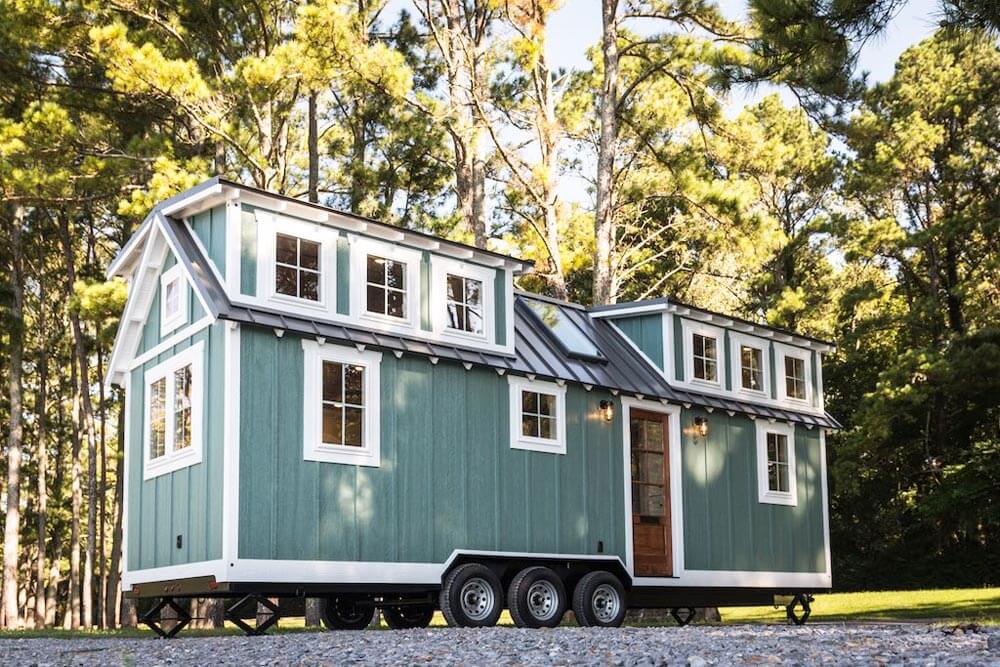
Where There Is A Wheel -There Is A Way
Let's Envision A World Where Legislators, Building Code Officials, Builders And Consumers No Longer Have To Weave The Mass Confusion Of Conflicting Codes And Standards.
Let’s get down to business and organize as the stakeholders in a thriving industry that is in charge of our own destiny. Let’s forge a path that addresses all health, life, and fire safety standards, in a spirit of inclusiveness, which, in turn, will open the flood gates for appropriate, attainable affordable housing.
The Future Of Tiny Is Now!
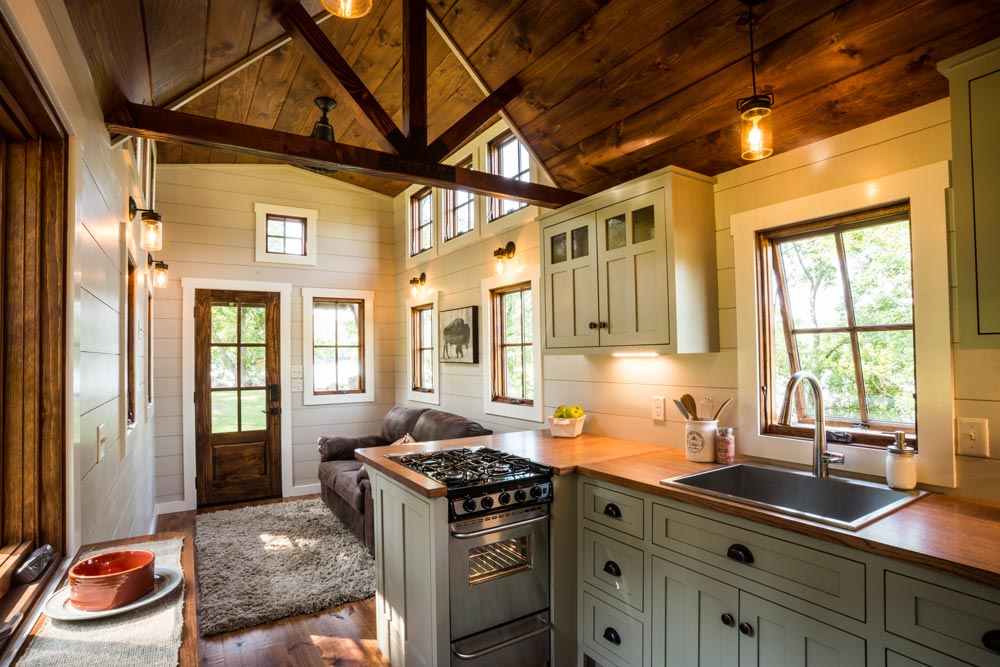
The Main Featured Images And
This Inside Photo: Courtesy Of Timbercraft Tiny Homes
Tiny House Alliance USA Editor
The Future Of Tiny Is Now!
Janet Thome Founder And President
janet@tinyhouseallianceusa.org
509 345 2013
Founder Of Tiny Portable Cedar Cabins

